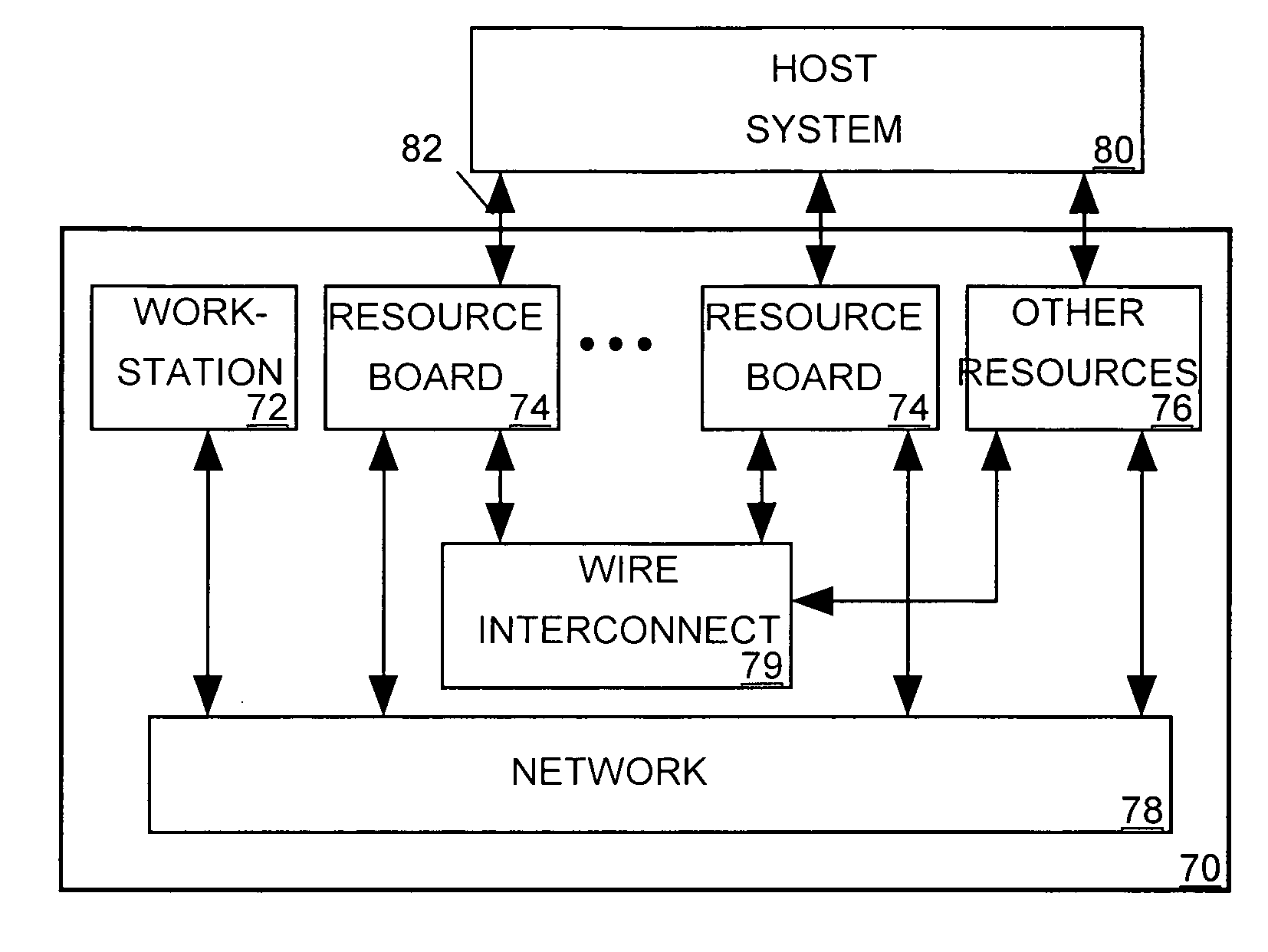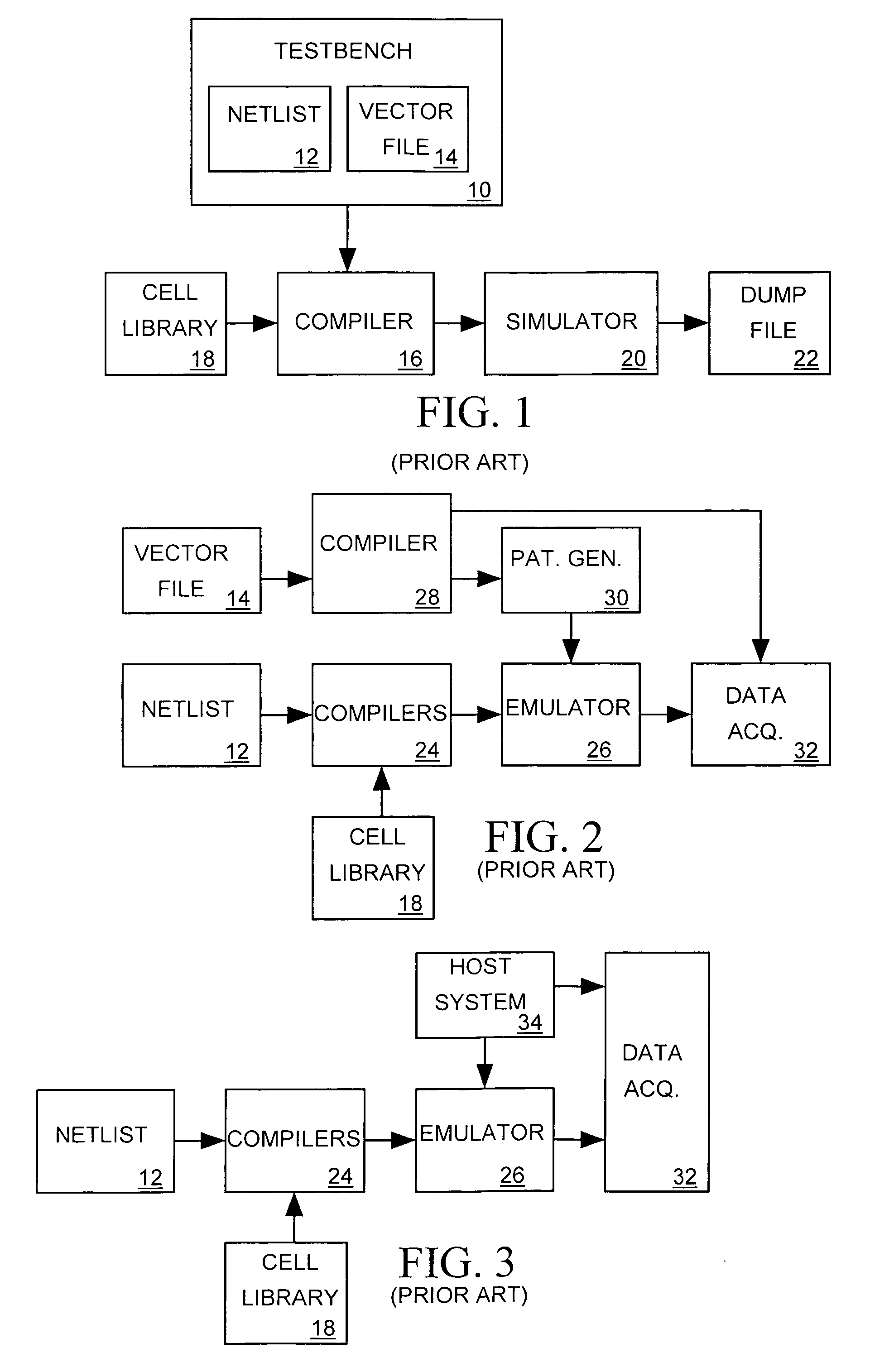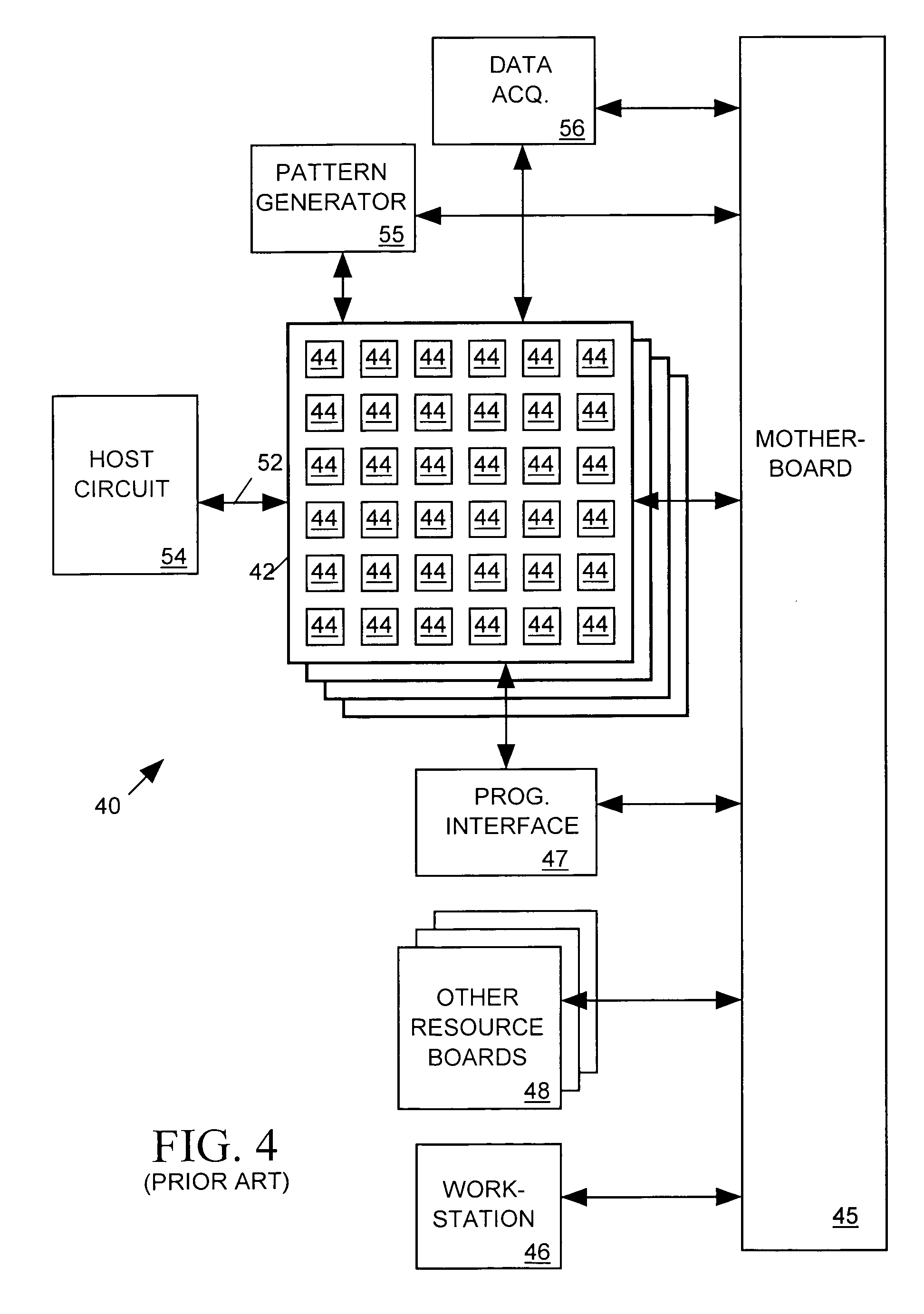Method of programming a co-verification system
a co-verification system and programming method technology, applied in the field of coverification system, can solve the problems of requiring a lot of processing time to simulate ic behavior, and not providing sufficient assurance that the new and old portions of the design will properly work together
- Summary
- Abstract
- Description
- Claims
- Application Information
AI Technical Summary
Benefits of technology
Problems solved by technology
Method used
Image
Examples
Embodiment Construction
[0040] The invention relates to a method of programming a co-verification system that can be implemented by a conventional computer reading and executing software residing on computer-readable media such as, for example, compact disks, floppy disks, hard disks, read only memory, and random access memory. While the drawings and this section of the specification describe a preferred embodiment of the method in accordance with the invention, the claims appended to this specification describe the full scope of the invention. The preferred embodiment of the invention described below illustrates one example of the invention recited in the claims. A programming system in accordance with the invention may be employed to program a co-verification system as described in detail in co-pending U.S. patent application Ser. No. 10 / 463,057, filed Jun. 16, 2003, incorporated herein by reference, and in co-pending U.S. patent application Ser. No. 10 / 735,342, also incorporated herein by reference.
[00...
PUM
 Login to View More
Login to View More Abstract
Description
Claims
Application Information
 Login to View More
Login to View More - R&D
- Intellectual Property
- Life Sciences
- Materials
- Tech Scout
- Unparalleled Data Quality
- Higher Quality Content
- 60% Fewer Hallucinations
Browse by: Latest US Patents, China's latest patents, Technical Efficacy Thesaurus, Application Domain, Technology Topic, Popular Technical Reports.
© 2025 PatSnap. All rights reserved.Legal|Privacy policy|Modern Slavery Act Transparency Statement|Sitemap|About US| Contact US: help@patsnap.com



